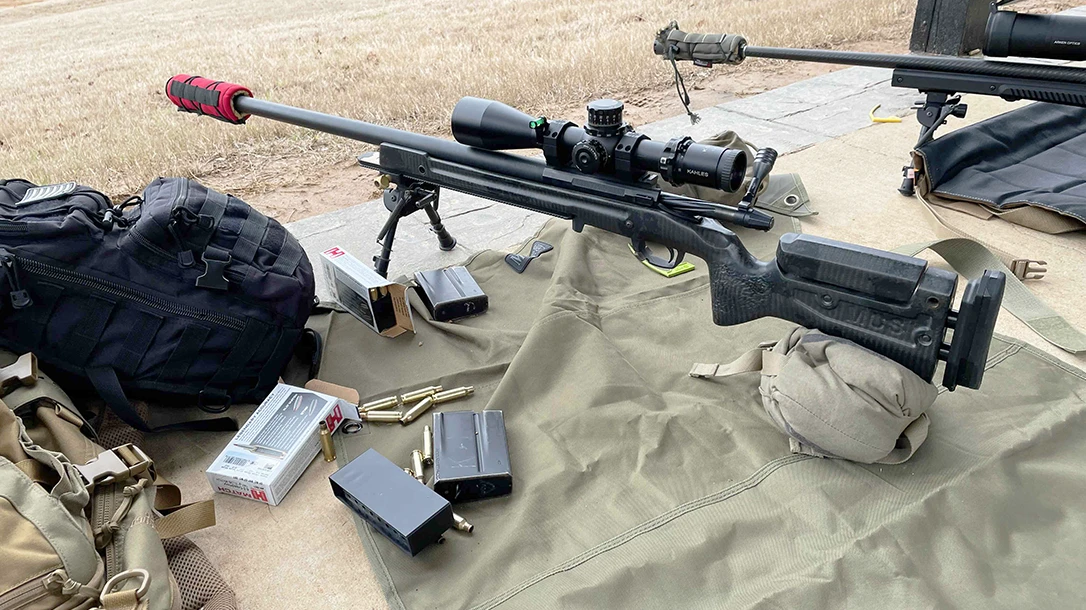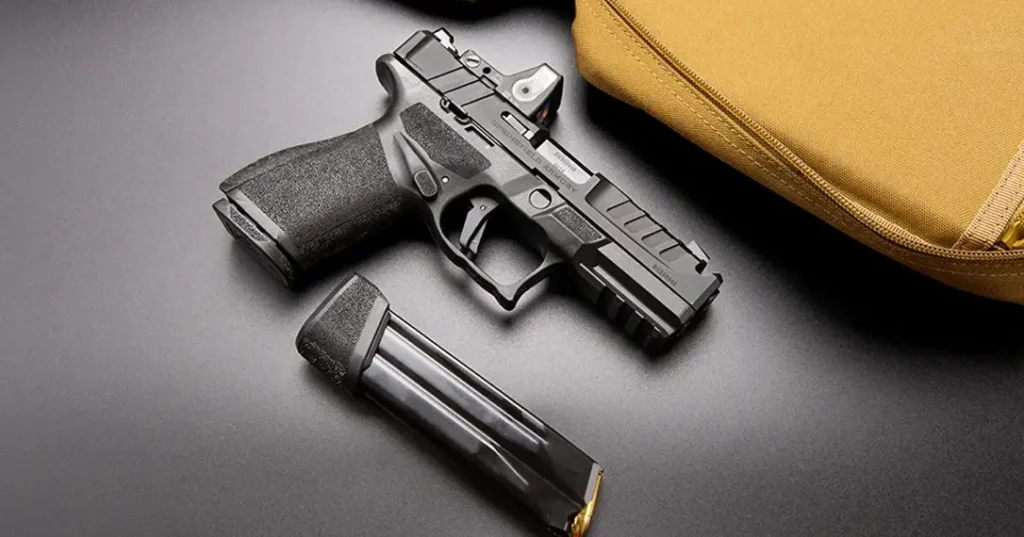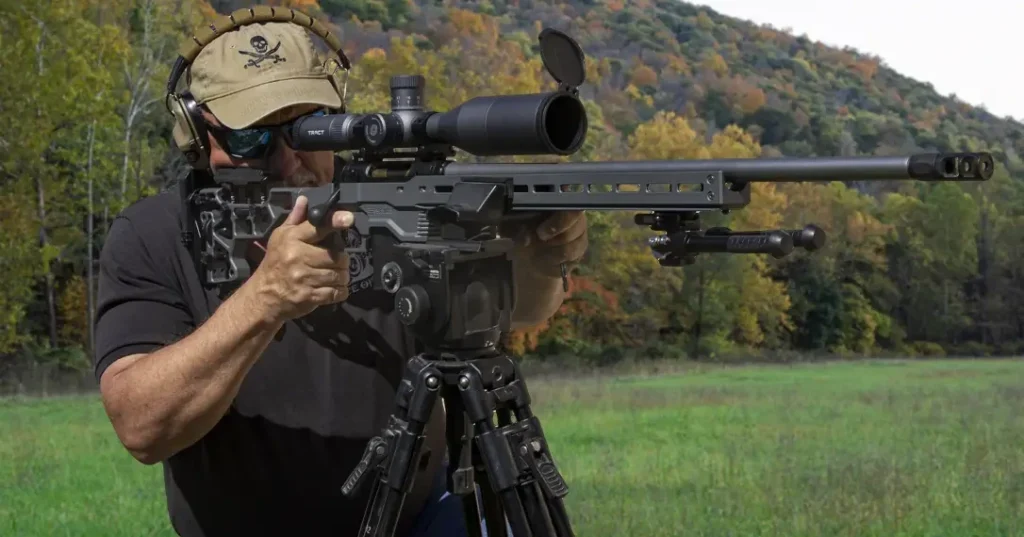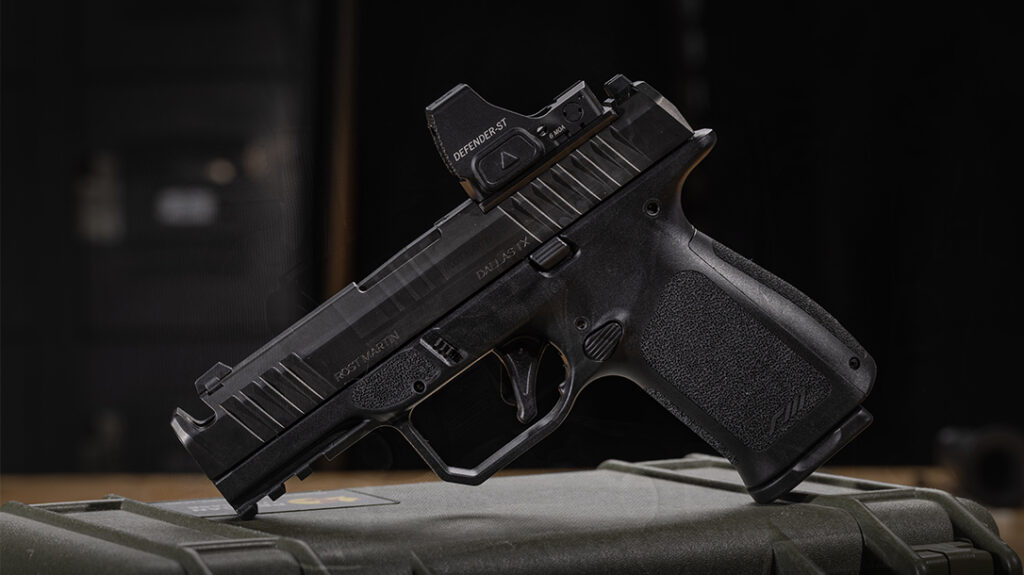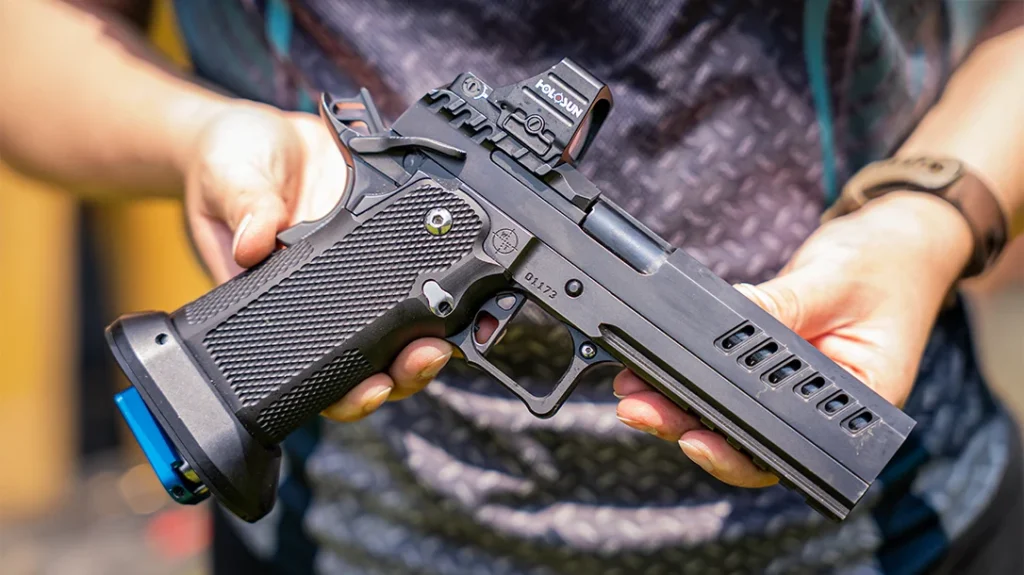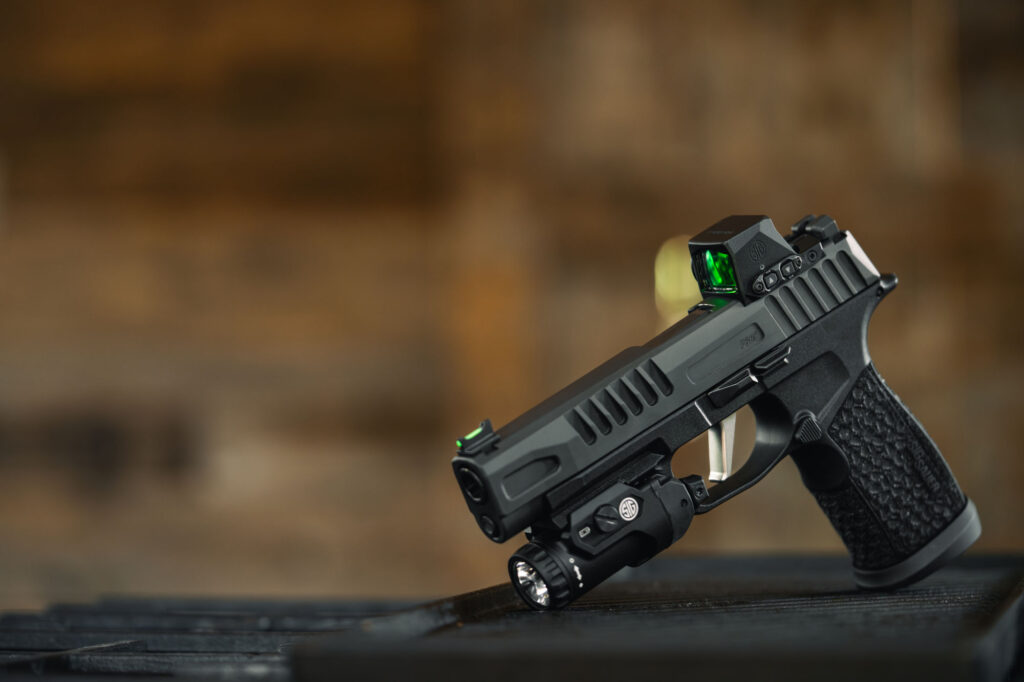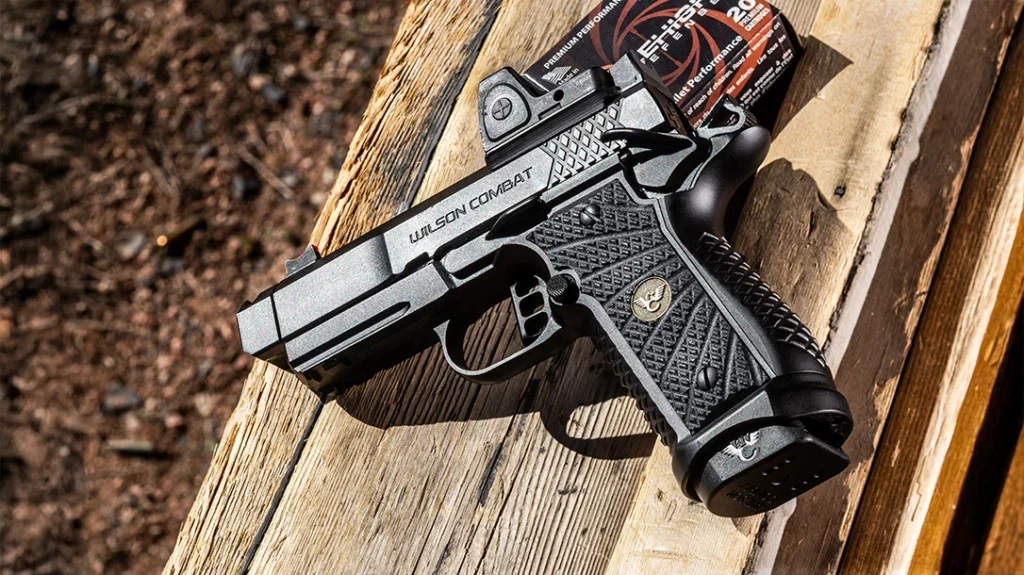The classic debate between “it’s not the gear, it’s the shooter” versus “quality tools matter” has raged in precision shooting circles for decades.
I spent four intensive days at K&M’s Comprehensive Precision Rifle Course behind one of K&M’s “house rifles.” These consist of high-end custom-built GA Precision 6.5 Creedmoor bolt guns that were put together for K&M. After those four long days, I can confidently say both perspectives hold truth. For those new to precision-rifle shooting, GA Precision is one of the biggest names in the industry.
Regardless of what you think about the “gear versus tools” debate, something was made extremely clear to me over the course of those four days:
Advertisement — Continue Reading Below
That learning the fundamentals of long-range shooting on a truly exceptional platform removes equipment variables from the equation.
Doing so allows students to thus focus entirely on skill development. And make no mistake, the GA Precision K&M’s house rifles are exceptional in ways that completely transform the precision rifle shooting learning experience.
K&M Purpose-Built Precision Rifles

Advertisement — Continue Reading Below
Walking into K&M’s facility, I was immediately drawn to the line of identical GA Precision rifles on the table. It was evident that every rifle was meticulously maintained and virtually indistinguishable from the next. “These aren’t just house guns,” explained our lead instructor. His comment carried a hint of pride that could only come from knowing you’ve optimized a system completely. “These are purpose-built learning tools designed to eliminate equipment excuses.”
The house guns’ build quality was immediately apparent upon first handling them. These rifles are built on Impact 737R right-handed actions. They caused these rifles to exude the confidence-inspiring solidness that only custom precision rifles seem to deliver. Cycling these actions feels so smooth that you want only to work the bolt repeatedly just for the tactile pleasure. I may have done that more than was necessary while waiting for the course to begin. No judgment, please.
The Heart of the System: Action & Barrel

Advertisement — Continue Reading Below
During the course, I had the opportunity to compare the Impact 737R action against several other premium actions. Its differences were subtle but meaningful. The Impact’s silky-smooth bolt throw becomes particularly apparent during rapid follow-up shots. During multiple-target engagement drills later in the course, that smooth bolt-throw became readily apparent.
The 26-inch MTU (Marksmanship Training Unit) contour Bartlein barrel is, quite simply, a ballistic thoroughbred. After sending over 400 rounds downrange over four days, I developed an emotional attachment to this chunk of precision-machined stainless steel.
The relatively heavy MTU contour might seem excessive to hunters. In a PRS training environment, however, it delivers two crucial benefits: exceptional thermal stability during rapid strings of fire and enough mass to dampen vibration for enhanced accuracy.
Advertisement — Continue Reading Below
“Bartlein knows barrels like Stradivarius knew violins,” quipped one shooter as we discussed the nuances of barrel manufacturing. The comparison isn’t hyperbole. I watched five different students shoot near-identical clover-leaf groups using different rifles from the rack that confirmed the remarkable consistency of these barrels. In fact, these guns include a sub-½ inch MOA accuracy guarantee with factory match ammunition.
The TriggerTech Advantage
If you’ve never experienced a truly exceptional trigger, you might wonder why precision shooters obsess over the details. The triggers found on K&M house rifles, TriggerTech Specials set at 2 pounds, compellingly made that point for us. That having a clearly predictable crisp break fundamentally changes your relationship with a rifle.
During precision drills, the clean-breaking trigger allowed me to focus entirely on sight picture and breathing. It spared me the mental bandwidth that I’d typically devote to trigger-management.
Advertisement — Continue Reading Below
One particularly telling moment came during a low-light shooting session. An instructor observed and asked me, “Notice how you’re not thinking about your trigger finger at all? That’s what a quality trigger gives you—one less variable to manage when it matters.”
The consistency from rifle to rifle was equally impressive—each house gun had the same predictable break. This allowed students’ skills to seamlessly transfer when switching between rifles.
For educational purposes, this standardization proves invaluable.
Advertisement — Continue Reading Below
Performance Enhancement By Suppression
Let’s address the elephant in the room—or rather, the cylinder at the end of the barrel.
The SilencerCo Scythe-Ti suppressor, complete with an Armageddon Gear mirage cover, isn’t just a noise reduction device. It’s a performance booster in training environments. Because a suppressor reduces both felt recoil and noise, it creates a learning space where students can focus on fundamentals without developing flinchy habits.
During rapid fire drills, the suppressor’s ability to tame the K&M rifle’s recoil allowed for faster follow-up shots with minimal position disruption. The Scythe-Ti’s titanium construction also keeps its overall weight manageable and still provides excellent sound suppression.
Another unexpected benefit revealed itself during wind reading exercises. “Watch through your scope as the bullet impacts,” instructed one of the trainers. “The suppressor gives you just enough reduction in recoil to consistently see your impacts through the scope.”
This proved tremendously valuable for understanding wind effects and making adjustments in real-time on follow up shots, a learning opportunity that would be significantly diminished without suppression.
It’s also worth highlighting the Armageddon Gear mirage cover. During extended shooting sessions, barrels naturally heat up. The resulting heat waves can create optical distortion that makes precision increasingly difficult. The Armageddon Gear suppressor cover effectively eliminates this variable. It affords shooters the ability to maintain consistent sight pictures, even after numerous rounds downrange. Its snug-fitting design also means that it won’t fly off during the middle of a stage. I found myself wishing that I had added one to my personal rifle years ago.
Stock Configuration: Adjustability Meets Stability

K&M house guns are assembled with Manners PRS-TCS Tune-able Competition Stocks. This part represents perhaps the most educationally valuable component of the entire system. Understanding how subtle adjustments to length of pull, cheek weld, and balance point affect accuracy outcomes can be transformative, especially to new shooters.
The stock’s adjustability allowed students of varying physical dimensions to achieve proper fit within minutes. A properly-fitting stock translates to immediate improvements in consistency. After a few adjustments to the comb height, one of the students who had been struggling with maintaining a proper cheek weld experienced a dramatic accuracy improvement instantly.
What impressed me most was the Manners PRS-TCS’ stability during positional shooting drills. Its angular profile and textured surfaces provided positive engagement with bags and improvised rests across all positions. During a particularly challenging barricade position, the stock’s flat forend offered a stable platform that my personal rifle’s more rounded design simply couldn’t match.
“The beauty of this stock isn’t just the adjustability,” noted one instructor as he helped a student dial in their fit. “It’s how it interfaces with different shooting positions and supports. Notice how the flat spots give you reference points you can repeat under stress.” This subtle but critical detail became increasingly apparent during timed stages later in the course.
Kahles Optics: Precision Meets Practicality

The Kahles K525i 5-25x56i riflescope with K&M’s custom SKMR reticles also deserves special recognition. Although I’ve used numerous high-end tactical scopes over the years, I had never spent considerable time behind a Kahles. Its optical clarity and mechanical precision are immediately apparent, but what truly distinguishes these K525i scopes is their thoughtful reticle design.
Shannon Kay, the owner of K&M Precision Rifle Training, partnered with Kahles Optics to design the SKMR reticle. SKMR reticles were created to be uncomplicated, practical and visually expedient for both tactical operations and the most demanding long-range competitors. The reticle provides an intuitive holdover and windage reference system that accelerates the learning curve for ballistic compensation. During wind estimation exercises, the consistent subtension values allowed for quick mental calculations that would be cumbersome with less optimized reticles.
If you’re thinking too much about your reticle, you’re not thinking enough about your target.
This lesson became particularly evident during mover drills, where the SKMR’s clean, uncluttered center allowed for precise target tracking without visual distractions.
The Kahles525i’s controls merit specific praise too. Its parallax adjustment and illumination controls are positioned for intuitive manipulation that allows the shooter to maintain cheek weld. This seemingly small detail pays dividends during rapid engagements where maintaining position is critical.
In the beginning, I found myself occasionally fumbling with parallax adjustment during early drills. After some time, it quickly became a non-issue as I became more familiar with the Kahles. I was easily making elevation adjustments and windage holdovers with confidence by the second day. Fortunately, this freed up my focus on reading the environment instead of manipulating the equipment.
Performance Under Pressure

The true test of any rifle system comes not during carefully constructed bench sessions, but under time pressure and elevated heart rates. The stress shoot exercises during the latter half of the course provided us students a chance to shoot our rifles under such conditions, and the GA Precision built K&M house rifles did not disappoint.
During one particularly humbling drill, students were required to move to a barricade, locate multiple targets at varying distances, and engage them in a specific sequence with varying positions. And this drill was conducted under tough time constraints too. In spite of my labored breathing and my awkward shooting position, my K&M rifle settled predictably with each shot, the trigger broke cleanly and impacts were consistently where expected. I knew that if missed, it was because I could feel myself pulling the shot or not building a proper position.
What impressed me most was the rifle’s “forgiveness” of minor errors. After fatigue began affecting my positional stability during extended drills, the rifle continued delivering shots accurately—a testament to how a quality platform can extend a shooter’s effectiveness.
“Notice how you’re fighting yourself, not the rifle,” commented one instructor after observing my deteriorating form during a particularly grueling exercise. Relaxing my shoulder was a common issue that I learned I needed to focus on with positional shooting. This observation really fortifies the point of why rifles like K&M house guns excel as learning tools. Their “high-fidelity” provides immediate and honest feedback about fundamental errors while ruling out any “equipment issues.”
Ammunition Consistency: The Final Piece
K&M endorses and uses Hornady ELD Match ammunition. The Hornady 147 grain ELD Match cartridge that I shot during the four-day training was a perfect fit for these GA Precision-built rifles. This match ammunition’s consistency from round to round was impressive, with standard deviations in velocity that could make any handloader envious.
Just like the house guns’ consistency allowed students to focus on learning and not worry about equipment, these Hornady factory-loaded rounds alo created a “stable ballistic platform.” Knowing that the ammunition was good to go, students were free to focus entirely on topics like wind reading or position building.
When collecting data, the Hornady ELD Match’s performance made establishing accurate DOPE (Data On Previous Engagements) straightforward and reliable out to 1,000 yards. An increasing number of PRS competitors are comfortable using Hornady’s ELD match ammunition, which speaks volumes in itself. After all, rifle ammunition deserves its own acknowledgement as a critical link in the “chain of precision.”
Maintenance Considerations: Built for Hard Use
A training rifle faces demands that few private rifles ever encounter. Yearly, K&M’s house rifles are likely to send thousands of rounds downrange across various conditions. Their ability to maintain sub-MOA performance despite this hard-use speaks volumes to their build quality and materials selection.
I had the opportunity to observe the maintenance routine performed on the rifles. It’s a systematic and thorough process that ensures reliable function and preserves accuracy. Beyond accuracy, serviceability is also factored into the house guns’ build process. Components are selected not just for performance, but also longevity.
The Complete K&M Package: More Than the Sum of Its Parts

All individual components of K&M’s house rifles are impressive in isolation. But it’s their integration into a cohesive system that creates something greater than the sum of its parts.
The rifles’ balanced weight distribution, the integration between action and trigger, the synergy between barrel and suppressor, and so on. None of these relationships are an accident. They all stem from thoughtful system engineering.
After four days behind one of these 6.5 Creedmoor rifles, I gained not just practical shooting skills but a deeper appreciation for how purpose-built equipment can accelerate the learning process. Once again, by removing equipment from the equation, K&M’s rifles allow students to focus entirely on building precision skills.
As I reluctantly racked my rifle on the final day, I found myself mentally specifying a nearly identical build for personal use. The fact that several other students did purchase this rifle during the course is probably one of the best endorsements any equipment can receive.
GA Precision-built 6.5 Creedmoor rifles aren’t just a tool for learning precision shooting; they’re benchmarks against which other precision rifles can be measured.
GA Precision K&M “House Rifle” Specifications
- Action: Impact 737R – Right-Handed Action
- Barrel: 26 Inch Bartlein Stainless, Threaded 5/8-24 TPI
- Twist Rate: 1:7.5
- Contour: MTU
- Finish: Matte Cerakote, Black
- Suppressor: SilencerCo Scythe-Ti suppressor
- Trigger: Trigger Tech Diamond Pro Curve – 4oz – 2 lbs pull
- Stock: Manners MCS PRS- TCS Stock
- Accuracy Guarantee: Less than 1/2 MOA
- Caliber: Your Choice of 6.5mm Creedmoor, 6mm Creedmoor or 6mm GT
- All barrels on K&M Custom builds are gunsmithed by GA Precision.
